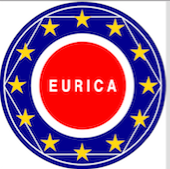Speaker
Dr
Hiroshi Watanabe
(RIKEN)
Description
RIBF80 experiment, “Structural changes between N=40 and N=50 next to Ni isotopes: a joint proposal” was performed in spring 2013 using a 238U beam at 345 MeV/u. Average beam intensity was about 10 pnA and the experiment was carried out for ~3 days.
BigRIPS was tuned to transmit 71Fe in the central trajectory and nuclei ranging from Mn to Cu were successfully implanted in the WAS3ABi array, consisting for this experiment of 5 layers of Si detectors. Being at the end of the Fast-Timing campaign the EURICA set-up was implemented with the addition of 18 LaBr3(Ce) detectors.
The proposal aimed at different topics, such as the assessment of the presence of seniority isomers in 72-74-76Ni isotopes, the detailed beta spectroscopy of newly populated Mn isotopes and the study of shape coexistence in the Ni and Co isotopes.
Results on the beta decay of Mn isotopes, confirming Fe nuclei to be deformed up to A=70, have been already published in “Decay properties of 68,69,70Mn: Probing collectivity up to N = 44 in Fe isotopic chain”, G.Benzoni et al. PLB 751 (2015) 107.
The analysis of the even Ni isotopes, mainly devoted to the search of states build on the deformed minima predicted to coexist with spherical structures by MCSM calculation of Otsuka et al., is being published in several papers: “Low-lying excitations in 72Ni”, A. I. Morales et al PHYSICAL REVIEW C 93, 034328 (2016), “Shape-Selective beta Decay of A=70 Isobars in the New N<=40 Island of Inversion”, submitted and others in preparation.
The data analysis focused mainly on the beta decay as a tool to study Ni isotopes and could benefit from the richness of the data set being able to populate the nuclei of interest via different decay chains, in order to enhance low- or high-spin structures.
The data analysis is still on-going and will now focus on the odd Ni isotopes populated either directly from Co or in the beta-delayed neutron emission channel.
Results and perspectives of this data analysis will be presented.
Primary authors
Dr
Ana Isabel Morales
(INFN Milano, IFIC Valencia)
Dr
Hiroshi Watanabe
(RIKEN)
Dr
giovanna benzoni
(INFN sezione di Milano)

